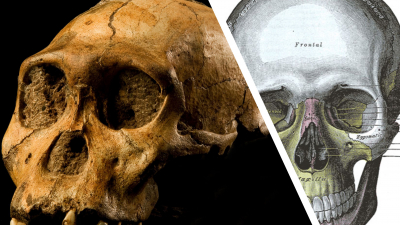In the pursuit of better understanding the human species from a biological and evolutionary perspective, anatomy and paleoanthropology have played a central role. Fossils provide tangible evidence of the deep history of humans and related species. To interpret those fossils, we need to have a thorough understanding of human anatomy, comparative anatomy and functional morphology (among many other tools).
Anatomy and paleoanthropology are also important tools in understanding how the human body functions and why structures are the way that they are. This in turn can be critical in creating and implementing effective medical procedures. Learning anatomy in an evolutionary context will give those students interested in pursuing health-related degrees a deeper preparation for their future studies.
Courses
| Number | Title | Codes |
|---|---|---|
| EVANTH 220 | Human Evolution | NS |
| EVANTH 221S | Becoming Human | R, NS |
| EVANTH 230 | Bodies of Evidence: Introduction to Forensic Anthropology | STS, NS |
| EVANTH 231L | Anatomy of the Lower Extremities | NS |
| EVANTH 235L | Primate Anatomy | NS |
| EVANTH 330 | Human Evolutionary Physiology | NS |
| EVANTH 333L | The Human Body | NS |
| EVANTH 334L | Human Osteology | NS |
| EVANTH 434L | Advanced Osteology | R, NS |
| EVANTH 520S | Reconstructing the Past: The Paleobiology and Paleoecology of Primates | R, NS |
| EVANTH 522 | The Hominin Fossil Record | NS |
| EVANTH 530 | Human Functional Anatomy | NS |
| EVANTH 537S | Orthopedic Biomechanics and Kinesiology | R, NS |
| EVANTH 570S | Energetics in Human Evolution, Ecology, and Health | R, NS |
| EVANTH 582S | Primate Adaptation | NS |
| EVANTH 588S | Macroevolution | R, NS |

